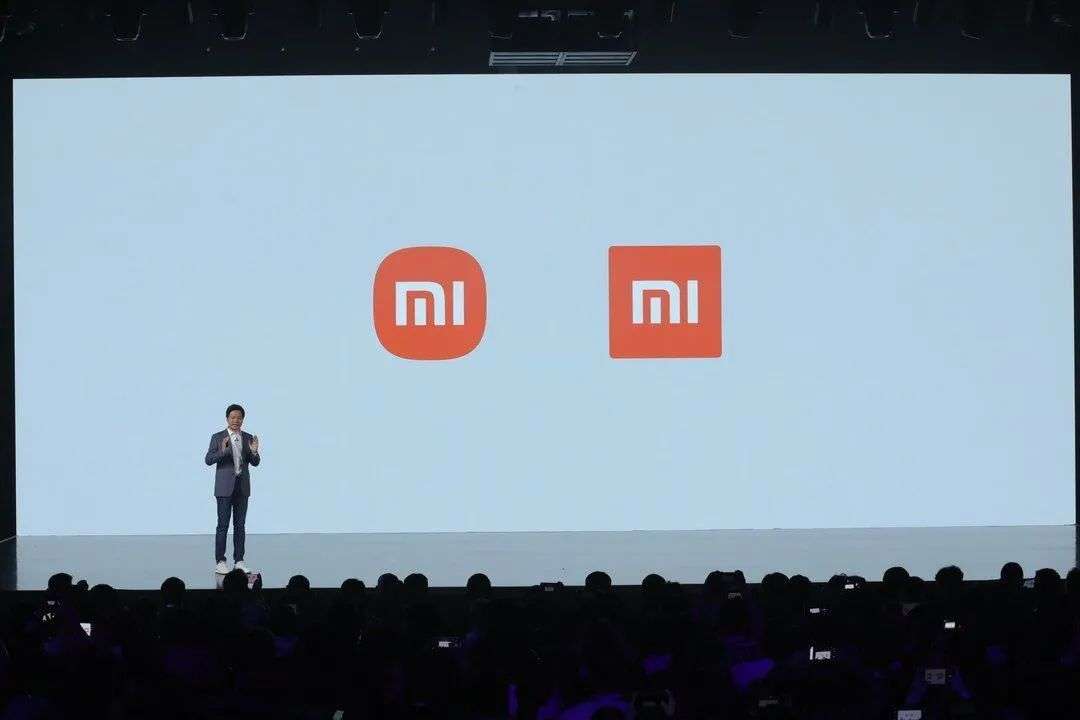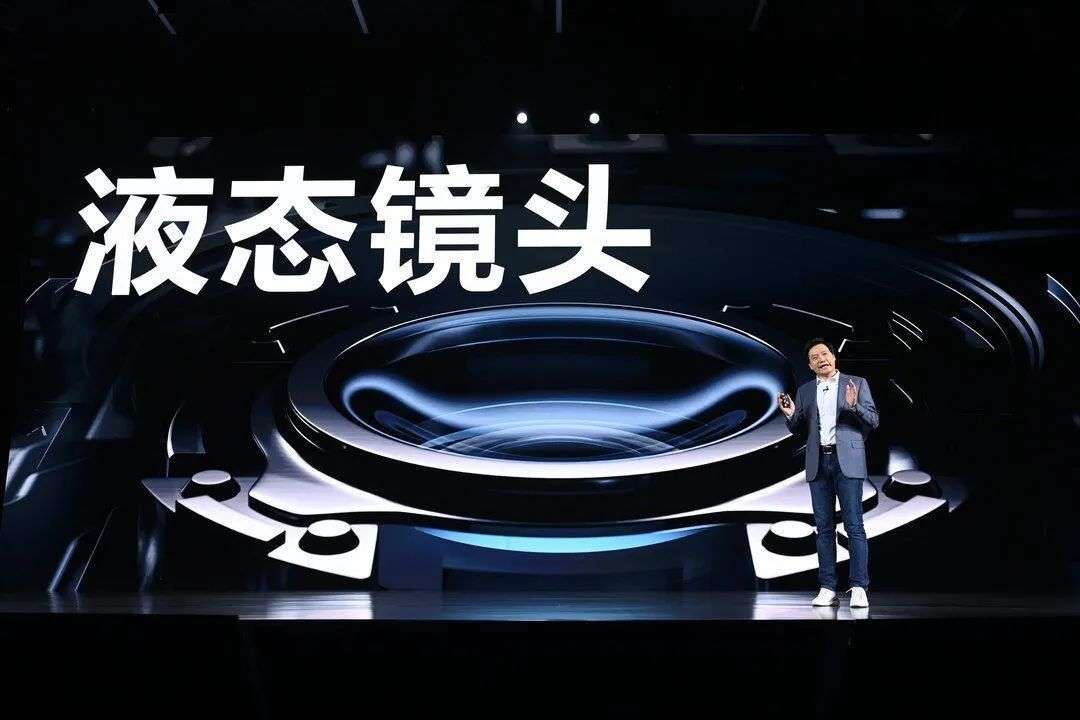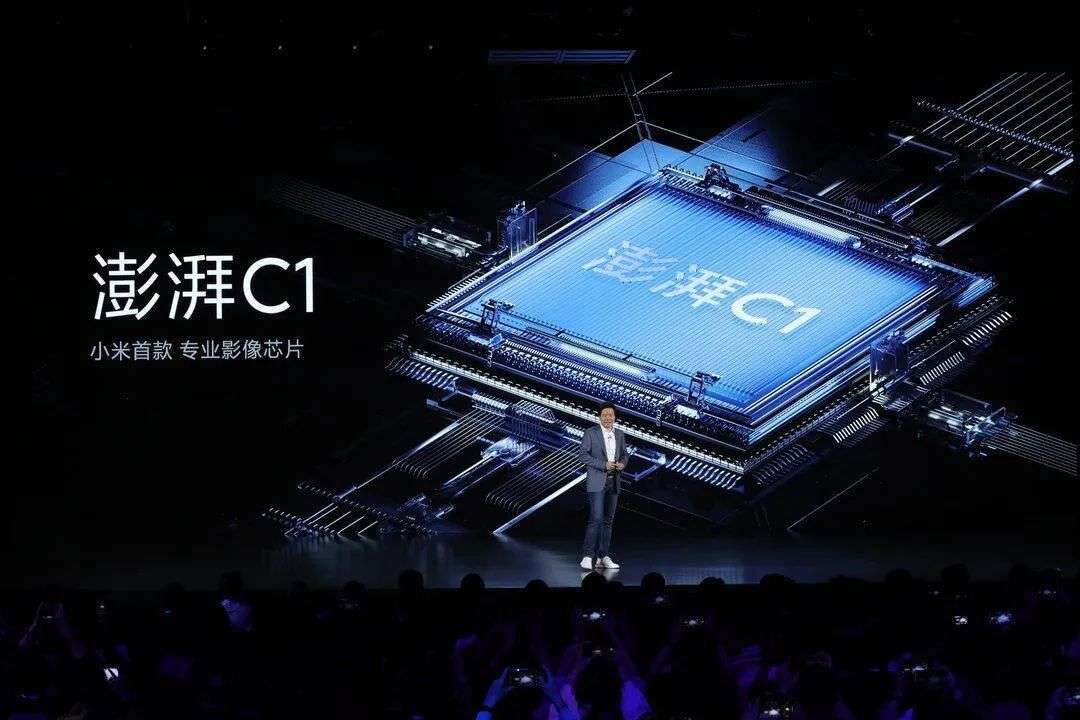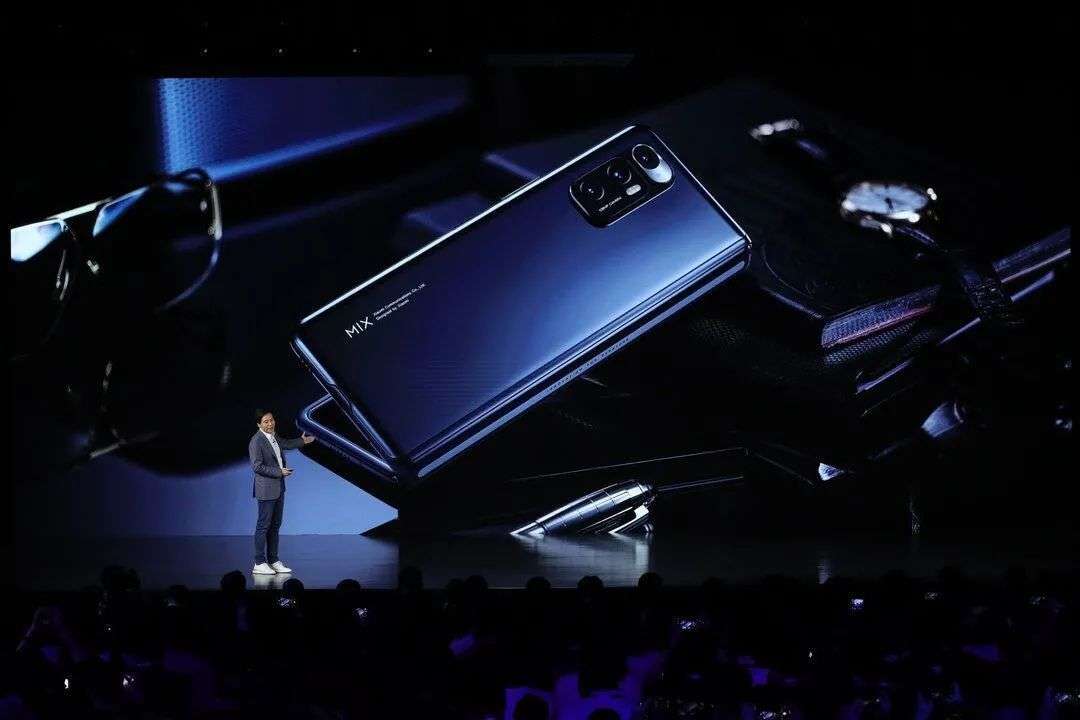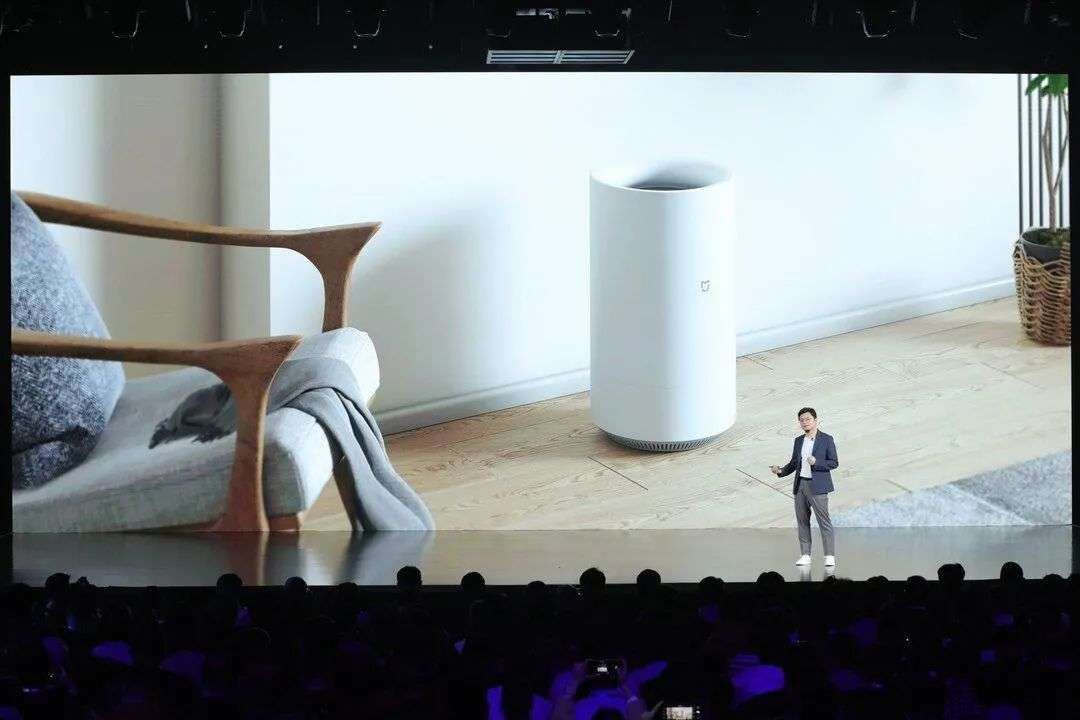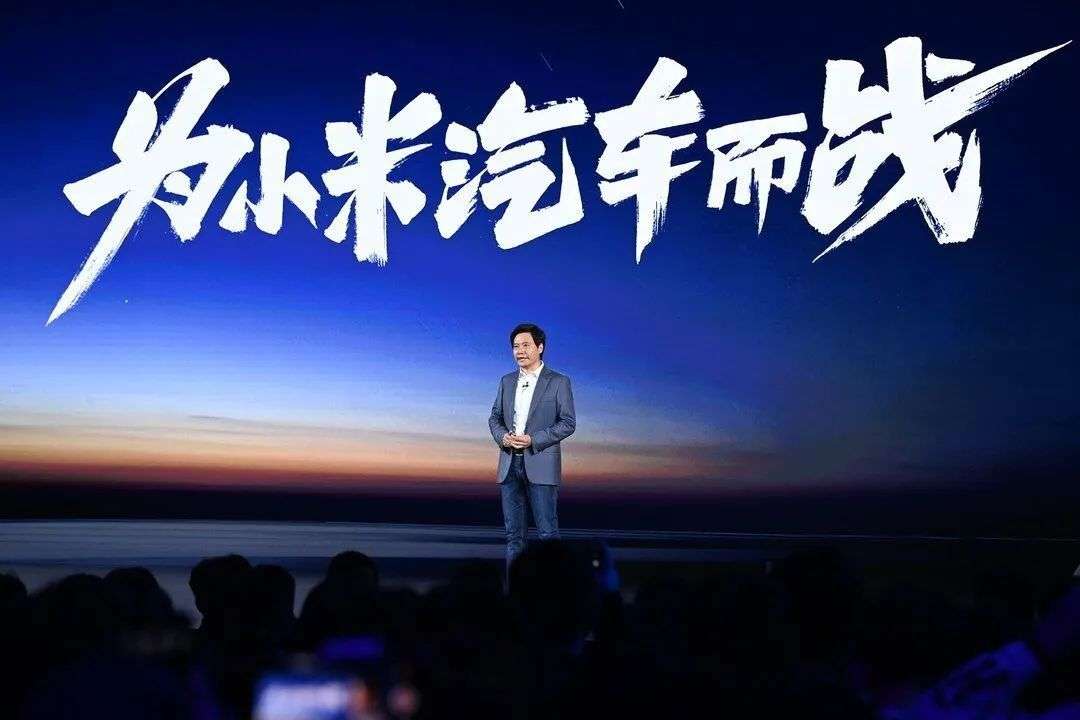Lei Jun and Xu Zhiyuan once talked about “the price of going out of the circle.” Lei Jun said frankly, along the way, others will put some labels on himself, “I pretend that these labels do not exist, and continue to walk in my direction. Maybe I have put on some new labels as I walked.”
Editor’s note: This article from the micro-channel public number “geek park” (ID: geekpark), author: Victoria Peng.
The lively press conference has passed. After the hustle and bustle, what does the change of Xiaomi mean?
Lei Jun and Xu Zhiyuan once talked about “the cost of going out of the circle.” Lei Jun said frankly that along the way, others will put some labels on himself, “I pretend that these labels do not exist, and continue to walk in my direction. Maybe I have put on some new labels as I walked.”
The “out of the circle” they said refers to the process of Xiaomi’s mobile phones gradually moving towards a larger market and being known by more people. This time, Xiaomi went out of the circle in another way.
Xiaomi’s two consecutive days of new product launches from March 29th to March 30th have become a hot topic for people on social media, short video platforms, and online communities.
People are talking about the new logo designed by the original Kenza, Xiaomi’s 10,000 yuan folding screen phone, the future Xiaomi smart car, and the 52-year-old Lei Jun’s re-launch after his success.
Xiaomi invited Kenya Hara to design a new logo and visual system, and put forward the concept of “Alive’s sense of life design”-“The more advanced technology, the closer to the form of life”
In recent years, it is difficult to see which mobile phone manufacturer’s new product launch conference can cause a big wave of public opinion. Lei Jun must hope that after this press conference, the “high-end” label will be branded deeper.
Xu Zhiyuan asked him, what would you give up for this huge change?
He said, “Change is not completely abandoning. Sometimes, sticking to the original idea and making it better is actually a change.” Lei Jun’s answer was no.There was something to avoid, but he didn’t say it. After doing this, Xiaomi has no turning back.
People have different expectations for Lei Jun and Xiaomi, and the significance of building a car is much more than just building a car itself. This year, why did Lei Jun and Xiaomi undergo these changes? What does the new strategy mean for the future of Xiaomi and the industry?
The time has come
The impact of mobile phone brands on the high-end market has long been a “main theme”. According to statistics from the China Academy of Communications, from 2014 to 2018, the market share of mobile phones with RMB 0-999 in China dropped from 49% to 15%, while the market share of mobile phones with RMB 1,000-3999 reached 72%.
In the past year, the market for high-end Android devices with more than 4,000 yuan was basically blank, but this time window is also narrowing a little. It can be seen that if we want to increase market share, we must hit the high-end. For Xiaomi, the market share of Redmi, which is unstable in the high-end and mid-to-low range price range, may also be impacted.
Of course, in addition to brand premium and market space, there are other reasons for the impact of high-end positioning. In the past, did Xiaomi not want to hit the high-end? of course not.
Xiaomi sold 146 million mobile phones in 2020, a year-on-year increase of 17.5%, ranking third in the world and first in China. It is difficult for anyone to shake the position of Xiaomi in a short time.
At this time, for the entire industry, competition is becoming more and more homogeneous, and the era of pure configuration and cost-effectiveness is slowly passing by. How to find true differentiation requires a return to technology and services.
In the past, Lei Jun entered the mobile phone industry as an outsider. Xiaomi does not have much accumulation in patented technology. It is more suitable to make breakthroughs in software and cost performance.
With Xiaomi’s continuous investment in core technologies such as chips and imaging, in 2019, Lei Jun established a technical committee, showing Xiaomi’s emphasis on technology research and development. With more abundant funds and technical talents, it is a natural thing to hit the high-end.
From “Born for fever” to “Standing high-end” now, this is not just a change in marketing, but also an expression. Xiaomi’s route is to first invest in technology and product development, and then express changes in positioning. Now is the time.
The adjustment of positioning is just a superficial, internally based on the market environment and corporate goals.Long-term strategy changes. On a global scale, when China’s technology industry has grown from being a follower to gradually being able to sit on an equal footing and have the opportunity to surpass, the leading companies must make new choices. As Lei Jun described, it’s time for the inflection point battle.
How can Chinese manufacturers lead the high-end trend?
Compared to why Xiaomi should hit the high-end market, how Xiaomi defines high-end is more worthy of attention.
At this spring conference, you can hardly see Lei Jun go to compare with friends. Obviously, the previous style of dealing with bidders is not applicable, and that kind of marketing rhetoric is sometimes more like advertising for others. If you want to become a trend leader, there is no way to follow to define new things.
It can be seen that at this press conference, Xiaomi is talking more about its own unique technologies and new understanding of application scenarios, for example, Xiaomi’s self-developed technologies in imaging, chips, and fast charging; MIUI has made innovations in interaction in entertainment, work and other scenarios; Xiaomi MIX FOLD has improved the service level, such as providing follow-up business exclusive services. Even the Xiaomi Youth Edition is no longer synonymous with reduction, but the ultimate performance of another product.
The world’s first liquid lens module was released on Xiaomi MIX FOLD
The price of doing this is that Xiaomi spent 2 years and invested 140 million yuan for the surging C1 chip released this time. Going back to the surging S1 chip, which invested 1 billion yuan in research and development, the process was tortuous and costly. In 2021, Xiaomi expects to invest 13 billion yuan in research and development expenses in the field of mobile phones and AIoT. There is no turning back arrow in the bow.
In addition to the aspects of technology, product quality, and service, let’s talk about pricing strategies.
Looking back at the past ten years, after Xiaomi launched its first mobile phone in 2011, it launched the Redmi brand in 2013, focusing on low-range prices. In 2019, Redmi became independent from Xiaomi and was renamed “Redmi”. This can be seen as an important node for the Xiaomi brand to officially move closer to the high-end. Then in 2020, Xiaomi launched the high-end flagship mobile phones Mi 10 and Xiaomi 11, which officially launched an impact on the high-end.
Starting from Xiaomi Mi 10, pricing has been on the rise. In this spring conference, Xiaomi’s product line almost covered the price of RMB 3,000 to RMB 10,000.Intervals.
A product’s pricing changes can often reflect its choice of brand positioning. But high-end is not high-end, price is not the decisive factor, product quality, service and philosophy are. Xiaomi’s definition of high-end is very different from traditional brands. Lei Jun said, “Xiaomi made a 10,000 yuan mobile phone not because it was priced at 10,000 yuan, but because the technology content in it was more than 10,000 yuan.”
The first professional image chip developed by Xiaomi
For Xiaomi, on the basis of pursuing high-performance products and technology, it still has to continue its cost-effective features. For example, Xiaomi has industry-leading applications in technologies such as cameras and fast charging, but the price will not be higher. In this respect, Xiaomi is indeed a “heterogeneous”. As Lu Weibing, President of Xiaomi China, said, “Under the background of a long-term shortage of goods this year, the pricing strategy is a test of the company’s values, whether to choose the user first or the profit first.”
From the experience of other industries, high-end and cost performance are not contradictory. For example, the price of Coca-Cola has always been around 2 yuan; for example, IKEA, which has a high-end sense, but is also relatively cheap; for example, the iPhone has launched a new product at a lower price, but consumers will not think it is low-end quality. The question is whether it can continue to be synonymous with “extreme”, which is a long-term test.
In addition, Xiaomi’s high-end mobile phones priced at 3,000 yuan or more than 300 euros in 2020 will have global sales close to 10 million units.
This is a good result for a product that has just been launched for more than a year. But looking at the iPhone, in the fourth quarter of 2020, 18 million units were sold in China alone. Compared with Xiaomi’s 146 million global mobile phone shipments, 10 million is not much.
2021 is crucial for Xiaomi to hit the high-end market
A brand that circulates more in the marketA product often better represents its positioning in the minds of consumers. If there is no way to deliver high-end products to the market in large quantities, its high-end plans will also face great challenges and uncertainties. From the just released sales data of Xiaomi 11 and Xiaomi 11 Ultra, one-minute sales exceeded 1.2 billion yuan, which also confirmed consumers’ recognition of Xiaomi’s high-end phones.
However, how to continue to maintain shipments and how to build its broader sales channels will still be the focus of Xiaomi in 2021. Chang Cheng, vice president of Xiaomi, said that Xiaomi’s high-end business can be summarized into three upgrades: innovation upgrade, channel upgrade and brand upgrade. “In 2021, we plan to open Xiaomi’s home offline stores in every county.”
What is Xiaomi going to become?
Although it has announced that it will build a car, Xiaomi’s new ten-year strategy is still the core strategy of firmly advancing the “mobile phone × AIoT”.
How to understand this strategy? The “Mobile Phone × AIoT” strategy was announced by Xiaomi in August 2020 after 4 years of planning and verification. From the past “mobile phone + AIoT” to “mobile phone xAIoT”, Lei Jun said that “mobile phone xAIoT” emphasizes the multiplication effect, mobile phones are still the core business, and the AIoT business needs to build a smart life around the core business of mobile phones and penetrate into more scenarios “This will be the moat of Xiaomi’s business model.”
At the press conference, Xiaomi also released a number of high-end smart home products
For example, at the press conference, Lei Jun said that next systematic advancement in the field of “whole house intelligence” is in line with this logic.
In Lei Jun’s view, smart electric vehicles are the same. As smart terminals, they are becoming the most important scenario of AIoT. After the press conference, the Xiaomi executive team also stated in an interview, “Xiaomi is a company that combines software and hardware. One of the biggest reasons for deciding to become an electric car is that we believe that cars are the largest mobile terminal in the future. This is similar to mobile phones. The strategy of xAIoT is very consistent. We will think about product definition from this aspect.”
Obviously, Xiaomi cars will be very different from the new cars currently on the market. “Except for batteries, chassis, and motors, most of the work of smart cars is focused on software. We need to redefine future consumers. Some content is needed.”
Some industry insiders predict that the core technological advantage of smart cars in the future may be autonomous driving capabilities. When the driver has more rest time in the car, it gives room for smart services to grow.
It can be seen that “smart” has become the core driving force of the development of this era. Its carrier extends from mobile phones to smart homes and then to smart cars. In this way, the expansion of Xiaomi’s business from mobile phones to providing a full set of smart life services is also a process of taking advantage of the trend.
At the same time, the competition between Xiaomi and its peers is no longer just a competition of mobile phones, but a competition based on user-based, higher-dimensional intelligent interconnection experience.
Lei Jun’s issue
Ten years ago, at the offline exchange meeting held in Geek Park, Lei Jun answered why he wanted to be Xiaomi. At that time, the Xiaomi mobile phone had not yet been officially launched.
At that time, the smart phone market included Apple, Samsung, Nokia, as well as domestic brands such as Huawei, ZTE, and Lenovo. The mobile phone market seemed to be a red sea. Lei Jun, who had studied 58 mobile phones at the time, said that he was very dissatisfied with the status quo of the mobile phone industry. He saw many problems and wanted to change it.
Everyone knows the story afterwards. Xiaomi has become the catfish that changed the traditional manufacturing industry. According to industry insiders, one of Lei Jun’s strong ability is the ability to define core key issues.
Currently, the current situation of the electric vehicle industry is very similar to the pattern of the mobile phone field 10 years ago, and there are many uncertainties. This time, what are the key issues defined by Lei Jun? He hasn’t said it yet, but it should have taken shape.
The office building of Xiaomi Technology Park also has a new logo
“By the end of 2020, the cash balance of Xiaomi Group will reach 108 billion RMB, and we can afford to lose money when we enter the car.” Lei Jun said that he is not short of money, and he sounds like he is cheering and cheering on the capital market, supply chain and internal team. It means, after all, this battle is quite difficult.
The automotive business certainly helps to enhance the Xiaomi GroupThe overall brand image of the car is tightly bound to Xiaomi, Xiaomi and Lei Jun have no retreat. The next step is to break the circle.
As a witness, we can also look forward to: Will smart cars become Xiaomi’s main product line? What industry problem can Xiaomi solve this time? Can Xiaomi create an exciting success again?
Lei Jun said that he wanted everyone to see who he was. In the past, he only showed one profile. When he shouted: “This is the last entrepreneurial project in my life, I will overwhelm all the accumulated reputation and achievements in my life and fight for Xiaomi cars.” The prelude to this “inflection point battle” has already begun. .

